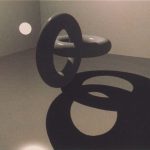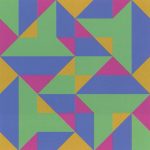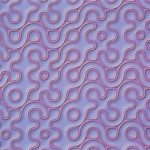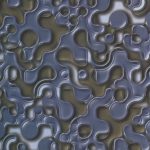Paul Brown
Most Recent Affiliation:
- Sussex University
Art Papers Chair:
Committee Member:
Art Show Reviewer:
Art Works:
-

Sculpture Simulation
Categories: [2D & Wall-Hung]
[SIGGRAPH 1986,SIGGRAPH Artworks in the Victoria & Albert Museum] -

4^16
Categories: [2D & Wall-Hung]
[SIGGRAPH 2006] -

Swimming Pool
Categories: [2D & Wall-Hung]
[SIGGRAPH 1998,SIGGRAPH Artworks in the Victoria & Albert Museum] -

My Gasket
Categories: [2D & Wall-Hung]
[SIGGRAPH 1999] -

Drawing
Categories: [Installation]
[SIGGRAPH 1986]
Writings and Presentations:
-
Title:
Reality Versus Imagination
Writing Type: Paper
Author(s):
Exhibition: SIGGRAPH 1992: Art Show
Abstract Summary:Fifteen years ago I exhibited some work that explored unusual perturbations in otherwise consistent color interpolation. The gallery was a part of University College, London and several scientists saw the show. One, a Polish mathematician and physicist called Andre Lissowski, chased me up. He was interested in the work I had done and wondered if it bore any relationship to other contemporary research into what ore now called non-linear phenomena-port of the field fashionably dubbed Chaos. Chaos studies were still an underground activity at that time and Andre took me along to small back rooms at the Royal Institution and ancient London Colleges where mostly young scientists along with the occasional Nobel laureate discussed the fantastic new ideas that were emerging worldwide.
[Download PDF]
Title: Art and the Information Revolution
Writing Type: Paper
Author(s):
Exhibition: SIGGRAPH 1989: Art Show
Abstract Summary:The author expresses his opinion that new imagemaking technology is providing an interdisciplinary language and creating a requirement for generalists rather than specialists. This new technology is also initiating a paradigm shift in those disciplines that make use of it. Lack of acknowledgment of such effects, particularly in the area of higher education, could lead to significant problems that, in the longer term, could affect manufacturing industry and national economic performance. One solution is to involve practitioners of non-applied disciplines (such as fine arts and pure science and mathematics) that have already adapted to a similar paradigm change and whose perception of the new tools and techniques is likely to be less parochial and more flexible.
[Download PDF]
Title: Recovering History: Critical and Archival Histories of the Computer-Based Arts
Writing Type: Essay
Author(s):
Exhibition: SIGGRAPH 2003: CG03: Computer Graphics 2003
Abstract Summary:During the 1960s, artists first began to get involved with digital computing. By 1968, it was possible for Jasia Reichardt to curate a survey of digital work in the influential Cybernetic Serendipity exhibition held at London’s Institute of Contemporary Art (ICA). The show went on to tour the United States and Japan, and many young artists were inspired to get involved with computers after seeing it.
[Download PDF]
Role(s):




